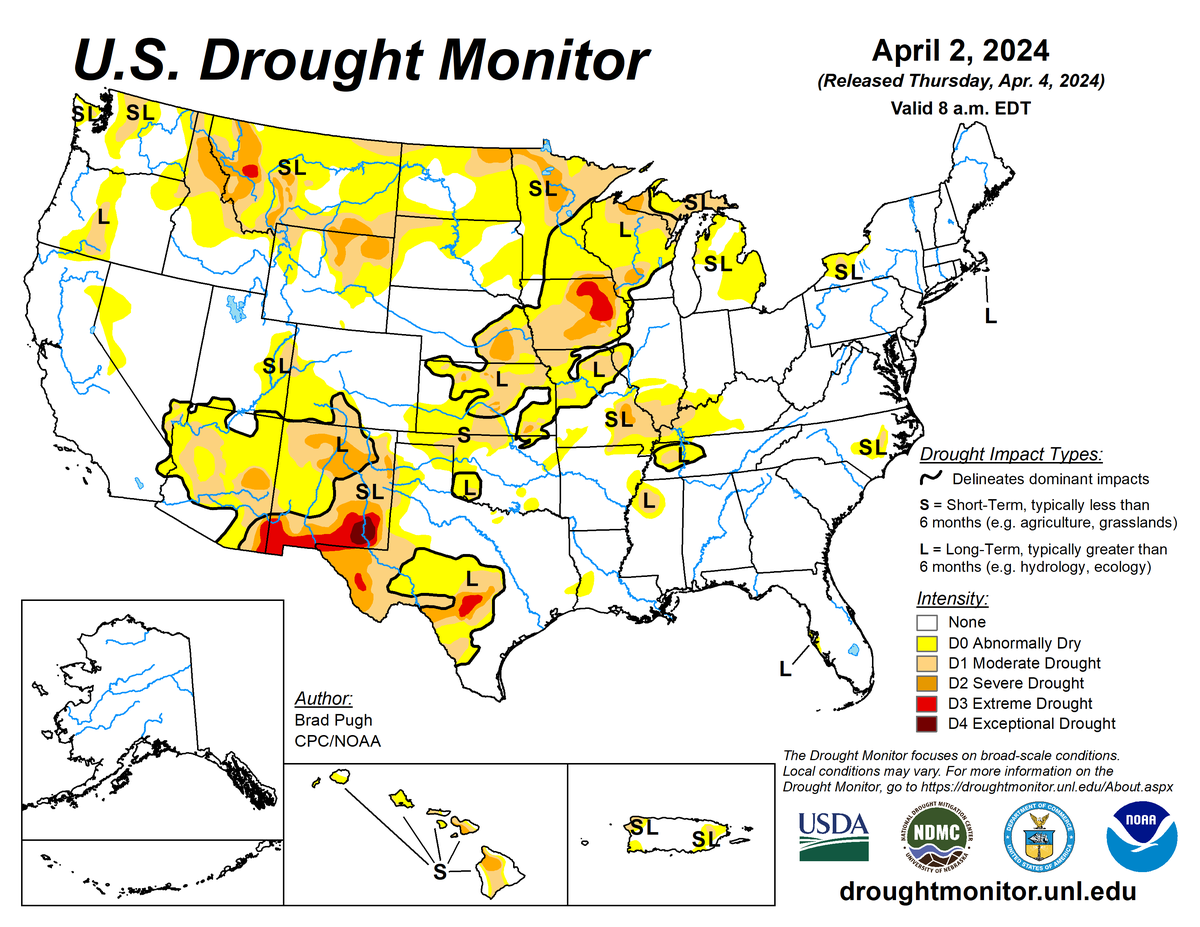
According to the April 2, 2024 U.S. Drought Monitor (USDM), moderate to exceptional drought covers 15.1% of the United States including Puerto Rico, a slight decrease from last week’s 15.2%. The worst drought categories (extreme to exceptional drought) stayed about the same as last week’s 1.0%.
A couple of powerful upper-level weather systems moved across the contiguous U.S. (CONUS) during this U.S. Drought Monitor week (March 27–April 2). These migratory troughs generated strong low-pressure systems at the surface. The lows and their associated cold fronts spread above-normal precipitation across much of the West and Eastern Seaboard, and over parts of the Plains and Midwest. They also generated strong winds and other severe weather, especially from the Plains to the Ohio Valley late in the week. When averaged over the week, the upper-level circulation consisted of an anomalous low-pressure trough over the western CONUS and a high-pressure ridge along the East Coast. The trough and its surface cold fronts gave most of the West, northern Plains, and Great Lakes a cooler-than-normal week, while the ridge and a southerly flow to the east resulted in a warmer-than-normal week from the southern Plains and Southeast to New England.
Some areas missed out on the precipitation. Dry areas included parts of the Pacific Northwest and Great Lakes, southern Florida, and much of the Plains and Lower Mississippi Valley to the southern Appalachians. Hawaii, Puerto Rico, and the U.S. Virgin Islands were also mostly drier than normal, while Alaska had a mixed precipitation anomaly pattern.
Drought or abnormal dryness contracted or was reduced in intensity in the Southwest, Midwest, and a few areas in the Plains and central Rockies. Drought or abnormal dryness expanded or intensified in Hawaii and a few parts of the Pacific Northwest, southern and central Plains, and Mid-Mississippi to the Ohio Valley. Nationally, contraction barely exceeded expansion, so the nationwide moderate to exceptional drought area decreased slightly this week.
Abnormal dryness and drought are currently affecting over 59 million people across the United States including Puerto Rico—about 19.0% of the population.

The full U.S. Drought Monitor weekly update is available from Drought.gov.
In addition to Drought.gov, you can find further information on the current drought as well as on this week’s Drought Monitor update at the National Drought Mitigation Center.
The most recent U.S. Drought Outlook is available from NOAA’s Climate Prediction Center and the U.S. Department of Agriculture provides information about the drought’s influence on crops and livestock.
For additional drought information, follow #DroughtMonitor on Facebook and Twitter.



